FUNDING CUTS IMPACT CT HUMANITIES: Help CT Humanities navigate recent funding cuts and continue our vital work across Connecticut. All donations made to CTH will be matched dollar-for-dollar up to $50,000. Donate today!
Now Viewing:
Work

Charles W. Morgan: New England’s Last Surviving Wooden Whaling Ship
As the last surviving wooden whaling ship of New England, the Morgan is representative of a typical 19th-century whaling vessel.
Read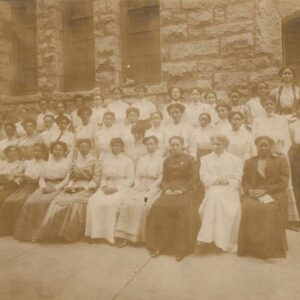
Martha Minerva Franklin: Breaking Barriers for Black Nurses
An activist for Black nurses in the early 20th century, Martha Minerva Franklin worked to end discrimination and secure equal rights for her profession.
Read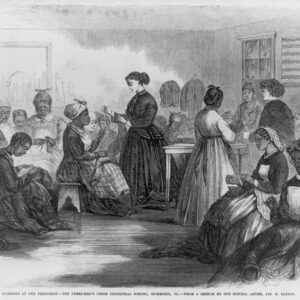
Hebron’s Josephine Sophia (White) Griffing and a Vision for Post-Emancipation America
From before emancipation and the 13th Amendment, Josephine Sophie White Griffing of Hebron, Connecticut, was an ardent advocate for enslaved and free people.
Read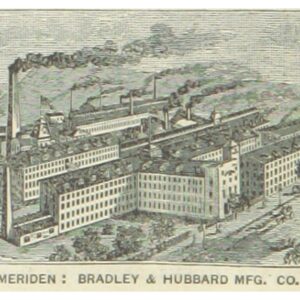
Illuminating Connecticut’s Past: The Bradley & Hubbard Legacy
Meriden’s Bradley & Hubbard Manufacturing Company was an industry-leading American manufacturer of kerosene lamps and metal household items.
Read
Army-Navy “E” Award Honors Connecticut for Support Against the Axis Powers
During WWII, the US military bestowed 175 Connecticut war plants with the Army-Navy “E” Award for outstanding production contributions to the army and navy.
Read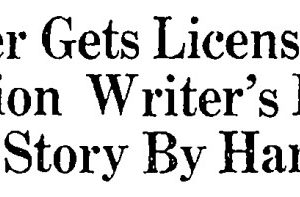
“Girl Pilot”: Mary Goodrich Jenson Breaks Barriers in Aviation and Journalism
Blending her aviation and journalism careers, Wethersfield’s Mary Goodrich Jenson pushed the boundaries of both fields.
Read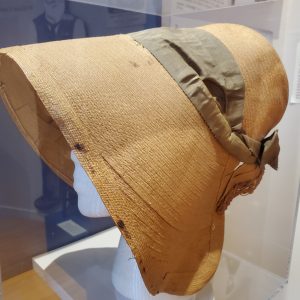
Sophia Woodhouse Welles: Wethersfield’s World-Famous Bonnet Maker
Wethersfield’s Sophia Woodhouse Welles made a name for herself as an inventor and a businesswoman in antebellum America with her bonnets.
Read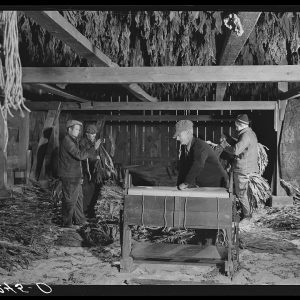
Polish Tobacco Farmers in the Connecticut River Valley
Many Polish immigrants found work on the tobacco farms in the Connecticut River Valley that specialized in the tobacco used for cigar wrappers.
Read
A New Source of Farm Labor Crops Up in Wartime
During times of war, in Connecticut, as in many other states, women became an increasingly important resource in food production.
Read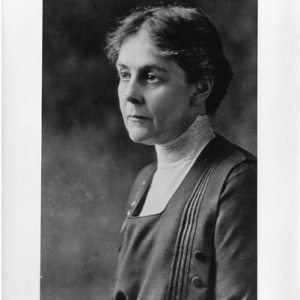
Alice Hamilton: The Nation’s Leading Expert on Industrial Diseases
Dr. Alice Hamilton was a leading authority on industrial diseases and the first female faculty member at Harvard before she retired to Hadlyme, Connecticut.
Read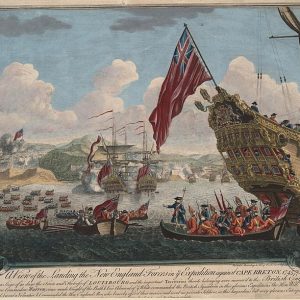
Connecticut’s French Connections
From Huguenots to French Canadian mill workers to modern immigration, Connecticut has always been a place shaped, in part, by a steady French influence.
Read
Actress Gwen Reed Best Remembered for Dedication to Childhood Literacy
Gwen Reed was an actress and educational advocate who grew up in Hartford in the early 20th century.
Read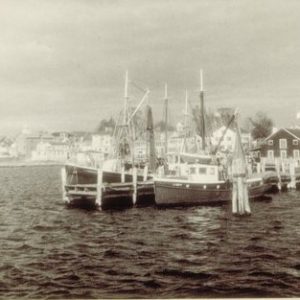
The Sea in their Blood: The Portuguese in New London County
Many Portuguese immigrants came to the US as mariners serving aboard ships, some remained to build new lives and communities in Connecticut.
Read
The Debate Over Who Could Occupy World War II Public Housing in West Hartford
In the 1940s, African American war workers eligible for government-funded housing found access restricted to some properties despite vacancies.
Read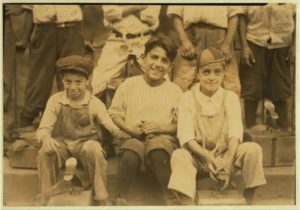
Boot Blacks and the Struggle to Survive in Hartford
In the late 19th and early 20th centuries, young boys who shined shoes (sometimes 70 hours per week) were the primary breadwinners for many struggling families.
Read
Ebenezer Tracy Made Some of the Finest 18th-Century Furniture
Ebenezer Tracy was a carpenter from Lisbon, Connecticut, who specialized in making fine, hand-crafted furniture.
Read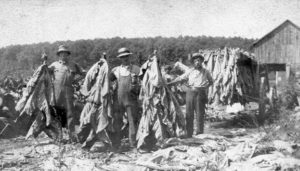
William Pinney Does It All for Ellington
A lifelong resident of Ellington, William N. Pinney served his town and his state up until his death at the age of 90.
Read
East Haven was Home to Connecticut’s First Iron Works
The roots of Connecticut’s iron industry lie in East Haven, starting in the 17th century.
Read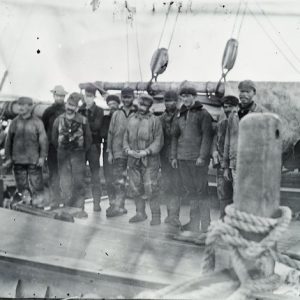
Africans in Search of the American Dream: Cape Verdean Whalers and Sealers
Cape Verdeans formed parts of whaling and sealing crews leaving Connecticut since the early 19th century, sometimes even rising to positions of authority.
Read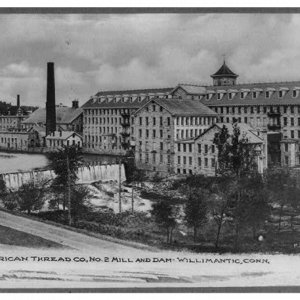
Willimantic’s American Thread Plant–A Multinational Corporate Takeover
American Thread’s arrival in Willimantic in 1899 demonstrates Connecticut’s role in the Progressive Era’s “rise of big business” and “incorporation of America.”
Read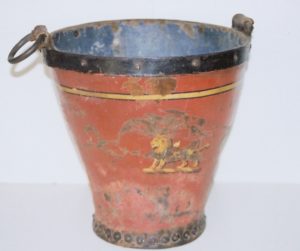
Firefighters Answer the Call in Greenwich
From neighbors rushing to help neighbors and the town’s first fire department, which opened in 1879, to the present day, the volunteer tradition of firefighting continues despite many changes over the decades.
Read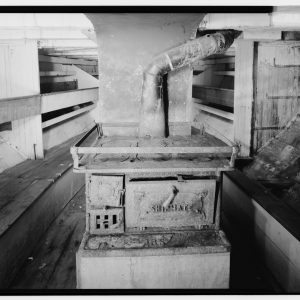
The Stamford Foundry Company Made Notable Stoves
When it ceased operations in the mid-1950s after over 120 years, The Stamford Foundry Company was the oldest known stove works in America.
Read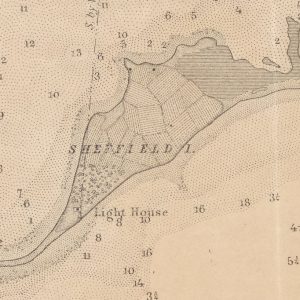
The “Welcoming Beacon” of Sheffield Island Lighthouse
Sheffield Island, is home to one of Connecticut’s historic lighthouses—a stone structure with a celebrated past dating back two hundred years.
Read
Hartford’s Industrial Day – Today in History: October 7
Hartford celebrated the 1908 opening of the Bulkeley Bridge, which connected Hartford and East Hartford, with a three-day extravaganza.
Read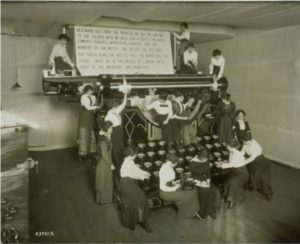
A Different “Type” of Connecticut Industry
In the middle of the 1800s, the invention of the typewriter revolutionized the way Americans communicated, including in Connecticut.
Read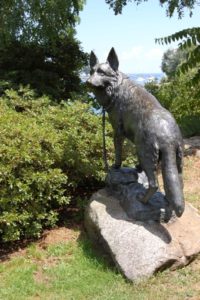
Monument to Hero of the Greenwich Police Department – Who Knew?
A memorial in Byram Park honors Yogi, who became the first police dog of the Greenwich Police Department in 1988.
Read
Connecticut Yankee Brings Power to the People
For nearly 30 years the Connecticut Yankee Atomic Power Company operated a nuclear power plant in Haddam Neck, Connecticut.
Read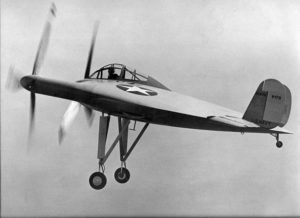
Boone Guyton Tested the Limits of World-Famous Aircraft
A long-time resident of Woodbridge, Boone Guyton was one of the most prolific test pilots in US aviation history.
Read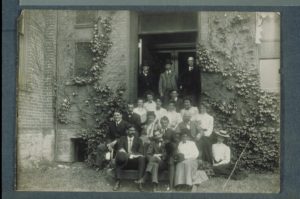
Connecticut Pin Makers
For the latter half of the 19th century and for much of the 20th century, Connecticut led the nation in pin production.
Read
Elastic Web Expands Textile Manufacturing in West Haven
For the better part of a century, West Haven produced one of the more unique and innovative textile products in United States’ history.
Read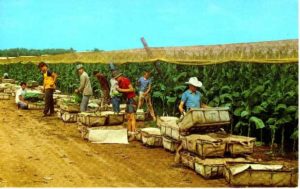
Literacy Tests and the Right To Vote
Connecticut was the first state to require a literacy test of would-be voters and, even as the practice came under fire as a tool of discrimination, the state held steady until 1970.
Read
Helen James Chisholm: A Hartford Teacher in Hawaii
Originally from Hartford, Helen James Chisholm’s career took her all the way to the Pacific to teach and run an orphanage.
Read
Briggs Manufacturing Drives Voluntown’s 19th-Century Cotton Economy
The Briggs Manufacturing Company was the premier employer in Voluntown, Connecticut, throughout the latter half of the 19th century.
Read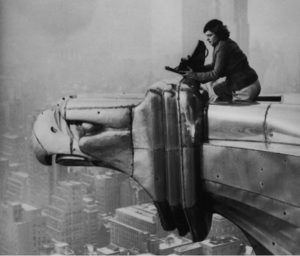
A Metal Giant in Wilton
Kenneth Lynch was an accomplished blacksmith who was a longtime resident of Wilton and created memorable pieces of metalwork found in the Northeast.
Read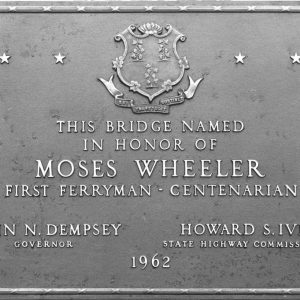
Moses Wheeler: Legendary Housatonic Ferryman
Moses Wheeler carried passengers across the Housatonic River as the operator of the first ferry from Stratford to Milford—over 350 years ago.
Read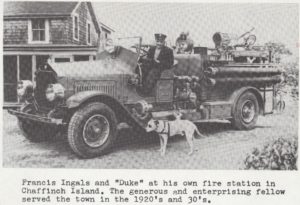
Guilford’s One-Man Fire Department
In the early decades of the 20th century, the town of Guilford had a fire department stationed on Chaffinch Island that consisted of just one man, Francis Ingals.
Read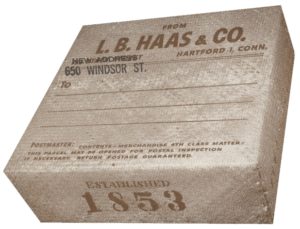
Cash Crop: L.B. Haas & Co. and the History of Tobacco in Connecticut
Louis B. Haas was a Dutch immigrant who opened a retail cigar store, Essman & Haas, on Central Row in Hartford in the late 1840s.
ReadWeaving the Cultural Fabric of Beacon Falls
The textile mills of the Naugatuck Valley brought tremendous change to towns like Beacon Falls.
Read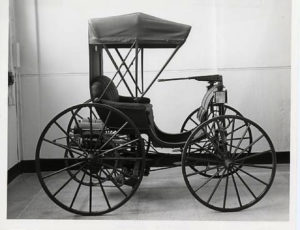
Frank Duryea Drives the First Automobile in Connecticut
In 1893, Frank Duryea, along with his brother, built one of the first cars in the country to have an internal combustion engine.
Read
John Howard Hale: Glastonbury’s Peach King
John Howard Hale came from a family of fruit growers in Glastonbury and developed a new type of peach that flourished in the harsh New England climate.
Read
The Incident of the Stonington Schooner ‘Breakwater’: A View from Indian Country
Hundreds of American Indians served as mariners, including on the Stonington schooner ‘Breakwater,’ which survived capture in the Falkland Islands.
Read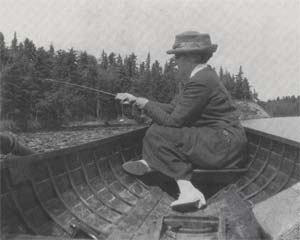
Edith Watson: Camera Artist
Over the five decades Edith Watson traveled around North America, her keen eye and box camera lens captured the otherwise untold stories of women.
Read
The Pike Family Lived a Life of Dyeing
The Pike family of Sterling, Connecticut worked in textile dying for four generations.
Read
Vivien Kellems Takes On the IRS
Reformer Vivien Kellems fought her most famous battle against the Internal Revenue Service (IRS) as she sought tax reform for businesses and single people.
Read
Humble Beginnings of the Dow Jones: How a Sterling Farmer Became the Toast of Wall Street
The life of Charles Dow, in many respects, follows the storyline of the prototypical self-made man.
Read
George Griffin: “Devoted Friend” to Samuel Clemens
Mark Twain wrote The Adventures of Huckleberry Finn and used his “good-natured” and “devoted” servant, George Griffin, as a likely model for one of literature’s most memorable figures—Jim, the runaway enslaved man.
Read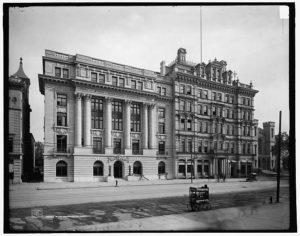
Aetna Helps Make Hartford “The Insurance Capital of the World”
Aetna started out as fire insurance company in Hartford in 1819, but spread into life insurance and is now a global leader in the health insurance industry.
Read
Hartford’s Sex Trade: Prostitutes and Politics
Union organizer Rebecca Weiner was among the few who proposed to address the social and economic conditions that enabled the world’s oldest profession to thrive in the capital city during the 1800s.
Read
Helen F. Boyd Leads the Charge for Better Public Health
A long-time Connecticut resident, Helen F. Boyd Powers was a national advocate for greater public access to nursing and healthcare education.
Read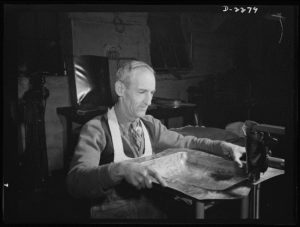
Early 20th-Century Immigration in Connecticut
Connecticut played host to new, vast populations of Italian, Polish, and French Canadian immigrants who helped reinvent the state’s cultural identity.
Read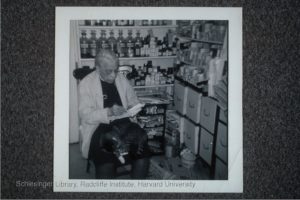
Miss James, First Woman Pharmacist in CT Right in Old Saybrook
Remembering Anna Louise James, the first woman pharmacist in the state of Connecticut.
Read
A Feeling of Solidarity: Labor Unions and Suffragists Team Up
The voting booth and the shop floor were two important arenas in the fight for women’s equality.
Read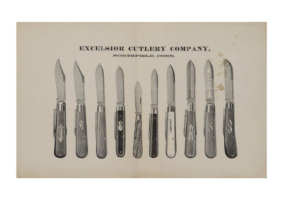
Connecticut Pocketknife Firms
Connecticut pocketknife production began around 1840. Over the next two decades, Connecticut became the earliest state to have a burgeoning craft.
Read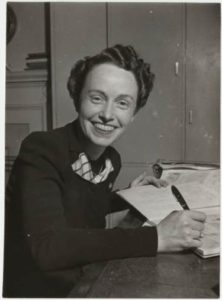
Providing Bundles for Britain and News for America
Janet Huntington Brewster Murrow was a Middletown native who grew up to be one of America’s most trusted news correspondents, philanthropists, and the wife of Edward R. Murrow.
Read
Nellie McKnight Promotes History and Literacy throughout Ellington
Nellie McKnight was a teacher, librarian, and historian who served the town of Ellington for most of her life.
Read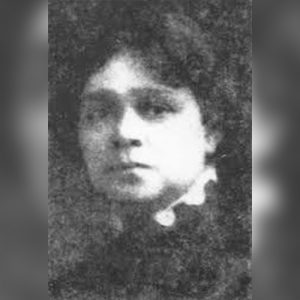
Mary Townsend Seymour: Hartford’s Organizer, Activist, and Suffragist
Mary Townsend Seymour was a leading organizer, civil rights activist, suffragist, and so much more in Hartford during the early 20th century.
Read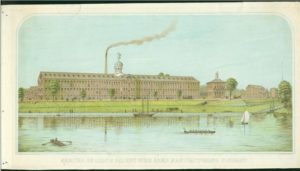
Samuel Colt: From Yankee Peddler to American Tycoon
Hartford native Samuel Colt built a financial empire on his design and automated production of the revolver.
Read
The Cheney Brothers’ Rise in the Silk Industry
Building a business on the back of an insect may seem foolish but for Manchester’s Cheney Brothers silk mill, it became the ticket to global success.
Read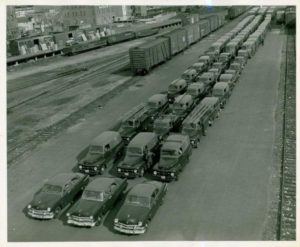
G. Fox and the Golden Age of Department Stores
Founded by Gerson Fox in 1848, G. Fox & Co. went on to become the nation’s largest privately owned department store.
Read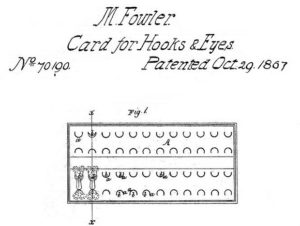
Family Ties Bring Together North Branford Industry
In 1830, a resourceful industrialist opened a button making shop in what today is the Northford section of North Branford.
Read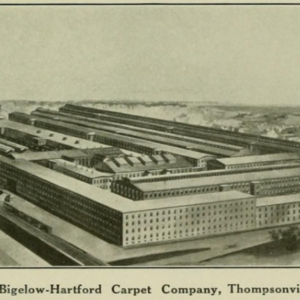
First Connecticut Carpet Mills Emerge in Simsbury and Enfield
In the 1820s, the first two notable carpetmakers emerged in the north central part of Connecticut—the Tariff Manufacturing Company and the Thompsonville Carpet Manufacturing Company.
Read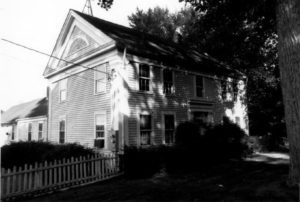
Franklin’s Ashbel Woodward was a Battlefield Surgeon and Historian
Ashbel Woodward was a physician, historian, and farmer who spent most of his life serving the town of Franklin.
Read
William Hawkins Abbott Finds the Energy to Power the Northeast
William Hawkins Abbott helped transform the market for affordable energy through his oil refining, pipeline, and distribution networks.
Read
The Early Years of the Pratt & Whitney Aircraft Company
Wasp and Hornet engines secure the reputation and success of this 1920s start-up venture.
Read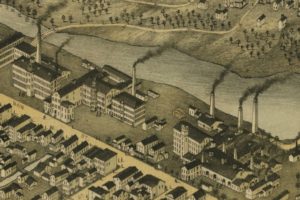
The American Brass Company: Leading the Way in the “Brass Valley”
The American Brass Company helped make the Naugatuck Valley a center of international brass production until the late 20th century.
Read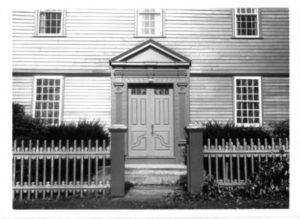
Daniel Curtiss: The Life of a 19th-Century Self-Made Man
Daniel Curtiss spent most of his life in Woodbury, thriving in business, pioneering the sale and distribution of commercial goods, and serving his town by holding political office.
Read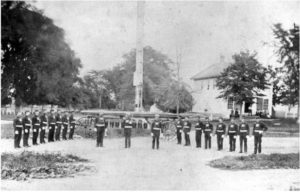
Connecticut’s Oldest Fire Department
The Wethersfield Volunteer Fire Department is the oldest continually operated fire department in Connecticut.
Read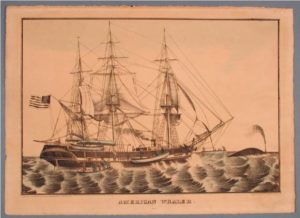
New London’s Indian Mariners
In an era of dispossession and diminishing autonomy on land, Native American mariners learned to use Anglo-American structures and institutions to establish a degree of power and personal freedom for themselves.
Read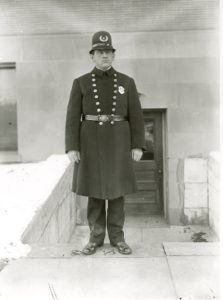
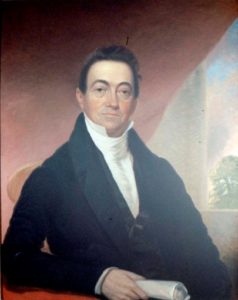
Samuel Foot: A Trader Turned Governor
Samuel Foot was a West India trader from Cheshire, Connecticut, who went on to a successful career in politics in the US Congress.
Read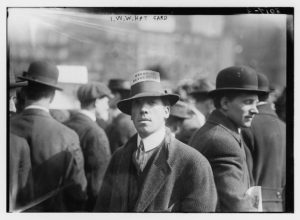
How the Wobblies Won Free Speech
Denied the right to free assembly in public spaces, Connecticut workers joined in a larger national movement of civil disobedience.
Read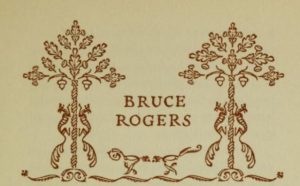
A Revolutionary Book Designer: Bruce Rogers of New Fairfield
Bruce Rogers was a book designer who settled in New Fairfield. Considered one of the great typographers of his time, his masterpiece was the 1936 Oxford Lectern Bible.
Read
Late 19th-Century Immigration in Connecticut
Immigration to Connecticut in the second half of the 19th century proceeded much as it had in earlier decades.
Read
Rising Tide: Steamboat Workers on the Connecticut River
For the deck hands, stevedores, and firemen who made the steamboats of the Hartford Line run, 18-hour days, dangerous conditions, and lousy food were the norm.
Read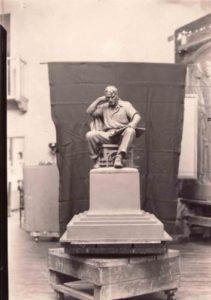
Evelyn Beatrice Longman Commemorates the Working Class
“Industry,” also known as “The Craftsman,” by Evelyn Longman, resides in Hartford and is a celebration of the working class and their contribution to society.
Read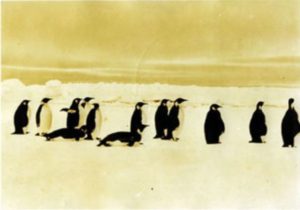
Sixty Degrees Below Zero: Connecticut Man Explores Antarctica
John Henry Von der Wall, a life-long resident of Bolton, took part in Rear Admiral Richard E. Byrd’s famed expeditions to the South Polar regions.
Read
Wheeler & Wilson: A Stitchy Situation in Watertown
The Watertown firm of Wheeler & Wilson Manufacturing produced one of the most successful products of the late 19th century.
Read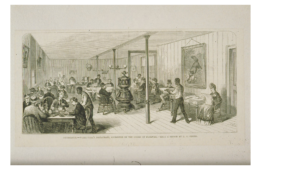
Serving Up Justice: Hartford’s Black Workers Organize
The earliest labor union for African American workers in Hartford appeared in 1902 with the birth of the Colored Waiters and Cooks Local 359.
Read
The Danbury Hatters
References to the hat making industry abound in Danbury and continue to shape much of the city’s identity today.
Read
Hope on the Wall: Connecticut’s New Deal Post Office Murals
Between 1934 and 1943, the federal government placed murals in twenty-three Connecticut post offices.
Read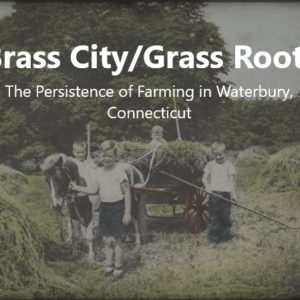
Brass City/Grass Roots: Waterbury Farming in the Late 1800s
This article is part of the digital exhibit “Brass City/Grass Roots: The Persistence of Farming in Waterbury, Connecticut”
Read
Brass City/Grass Roots: Farming as Recycling: The Becces in the North End
This article is part of the digital exhibit “Brass City/Grass Roots: The Persistence of Farming in Waterbury, Connecticut”
Read
Brass City/Grass Roots: From Farmers to Developers: The Rasmussens of Town Plot
This article is part of the digital exhibit “Brass City/Grass Roots: The Persistence of Farming in Waterbury, Connecticut”
Read
Brass City/Grass Roots: The Pierponts of East Farms
This article is part of the digital exhibit “Brass City/Grass Roots: The Persistence of Farming in Waterbury, Connecticut”
Read
Brass City/Grass Roots: Struggles and Decline
This article is part of the digital exhibit “Brass City/Grass Roots: The Persistence of Farming in Waterbury, Connecticut”
Read
Brass City/Grass Roots: Food Marketing and Processing as Part of Civic Culture
This article is part of the digital exhibit “Brass City/Grass Roots: The Persistence of Farming in Waterbury, Connecticut”
Read
Brass City/Grass Roots: What Makes a Farm a Farm? Other Sites of Food Production in Waterbury
This article is part of the digital exhibit “Brass City/Grass Roots: The Persistence of Farming in Waterbury, Connecticut”
Read
Brass City/Grass Roots: Remnants and Revivals
This article is part of the digital exhibit “Brass City/Grass Roots: The Persistence of Farming in Waterbury, Connecticut”
Read
Brass City/Grass Roots: Bucks Hill: Waterbury’s Rural Holdout
This article is part of the digital exhibit “Brass City/Grass Roots: The Persistence of Farming in Waterbury, Connecticut”
Read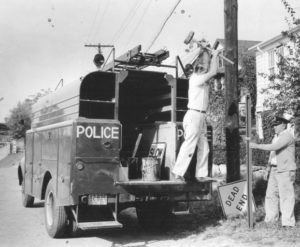
Greenwich Emergency Responders: On the Move Overtime
Horses, motorcycles, and boats are just a few of the modes of transportation that town emergency personnel have used over the years to get to where they’re needed.
Read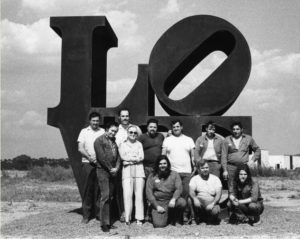
North Haven: Fabricating Sculpture in the 1960s and 1970s
Lippincott, Inc., in North Haven, was one of the most highly respected fine-arts metal fabricators in the country in the second half of the 20th century.
Read
Built on Innovation, Saved by Nostalgia: Hitchcock Chair Company
In the 1820s Lambert Hitchcock adapted mass production concepts pioneered in the clock-making field to chair manufacture.
Read
Amos Bronson Alcott Changes the Way Connecticut Children Learn
Amos Bronson Alcott was an educator and reformer born in Wolcott, Connecticut and father to best-selling author, Louisa May Alcott.
Read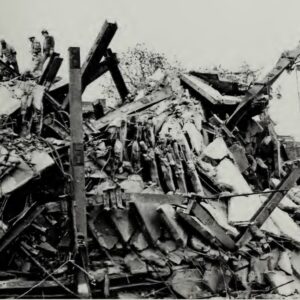
The Collapse of the L’Ambiance Plaza
On April 23, 1987, twenty-eight workers lost their lives during a collapse at the L’Ambiance Plaza construction site in Bridgeport.
Read
Child Labor in Connecticut
While Connecticut proved to be one of the more progressive states when it came to child labor laws, it still took federal legislation to protect children in the workplace.
Read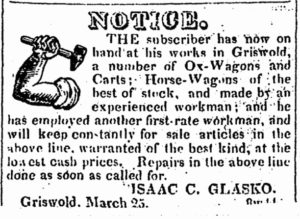
Blacksmith Isaac Glasko Challenges the State Constitution
Isaac Glasko was a blacksmith of mixed African American and Native American descent who challenged 19th-century voting rights in Connecticut.
Read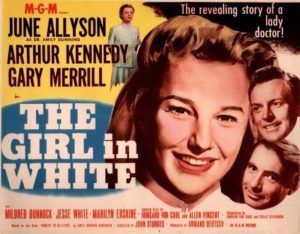
New Canaan’s Pioneering Female Physician
Dr. Emily Dunning Barringer was the first female ambulance surgeon in New York City and the first female physician to work as an intern in a New York City hospital.
Read
Vera Buch Weisbord’s “Radical” Life
Vera Wilhelmine Buch Weisbord was a labor activist who helped organize trade unions and strikes that shaped the labor movement of the 1920s and 1930s.
Read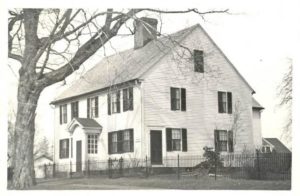
A Pioneering Woman in Business: Martha Parsons of Enfield
Enfield’s Martha Parsons broke new ground in her pursuit of employment opportunities for women. Her family home now belongs to the Enfield Historical Society.
Read
Hartford’s Great Migration through Charles S. Johnson’s Eyes
During the Great Migration of the early 1900s, African Americans from the rural South relocated to Hartford and other Northern cities in search of better prospects.
Read
Laboring in the Shade
Thousands of Black Southern students, including a young Martin Luther King Jr., came north to work in Connecticut’s tobacco fields.
Read
One-Legged Stools – Who Knew?
Hazard Powder Company employees sat on one-legged stools to keep them from falling asleep while working with dangerous materials.
Read
A Connecticut Slave in George Washington’s Army
Nero Hawley, born into slavery in Connecticut in the 18th century, fought in the Revolutionary War.
Read

The Kewpies Buy A House in Westport
The Kewpies originally appeared as a comic strip in the Christmas issue of the 1909 Ladies Home Journal.
Read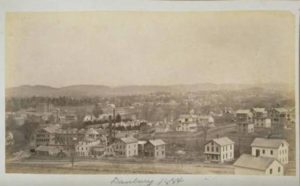
Ending the Danbury Shakes: A Story of Workers’ Rights and Corporate Responsibility
Despite the known dangers of prolonged exposure to mercury, the hat-making industry was slow to safeguard workers against its toxic effects.
Read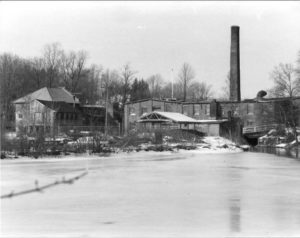
Bevin Brothers Helps Transform East Hampton into Belltown, USA
Home to 30 different bell manufacturers, the town of East Hampton is informally known as “Belltown, USA.”
Read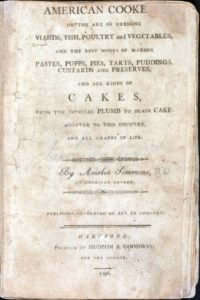
Amelia Simmons Adds a Uniquely American Flavor to Cooking
In 1796, Amelia Simmons authored American Cookery—believed to be the first cookbook authored by an American published in the United States.
Read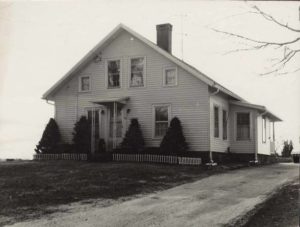
Seth Thomas Works Around the Clock in Wolcott
Seth Thomas was a Connecticut native who became a pioneer in the mass production of high-quality wooden clocks.
Read
Roger Griswold: A Governor Not Afraid To Challenge Authority
Born in Lyme, Roger Griswold was a lawyer, judge, and politician who spent the better part of his life in service to Connecticut.
Read
Broadway Comes to Westport
The Westport Country Playhouse is meant to provide artists, students, and entertainers with a place to create and produce live theater experiences away from traditional big city theater districts.
Read
Benjamin Wright: The Father of American Civil Engineering
Benjamin Wright helped build transportation and canal systems in the United States and served as the chief engineer on the construction of the Erie Canal.
Read
New Haven: What Was Everyday Life Like During the Civil War?
A great primary resource for digging into a community’s everyday life is a city directory.
ReadBeacon Falls Rubber Shoe Company Puts Best Foot Forward
Father and son George and Tracy Lewis not only founded a business together, they also had a hand in more than doubling the population of Beacon Falls.
Read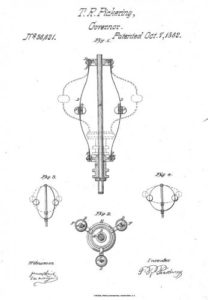
Portland Improves the Steam Engine
Thomas R. Pickering, an engineer, ran a factory power plant in the mid-1800s and made improvements.
Read
The Wallingford Oneida Community
In the late 1800s, Wallingford was home to a small branch of the Oneida Community.
Read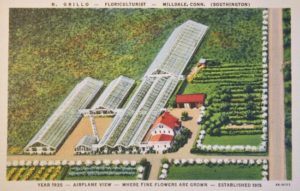
Nicholas Grillo and his Thornless Rose
Nicholas Grillo was a self-made floriculturist who earned international acclaim for developing the world’s first thornless hybrid tea rose.
Read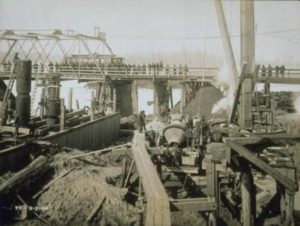
The Sand Hogs Set the Foundation for the Bulkeley Bridge
Toiling in dangerous conditions beneath the Connecticut River’s surface for only $2.50 a day, African American workers dug the foundation for the Bulkeley Bridge.
Read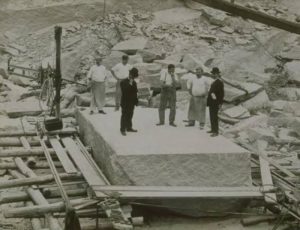
Branford’s History Is Set in Stone
Recognized for its superior quality, the polished rock that came out of Branford traveled by schooner or rail to points as far as Chicago and New Orleans.
Read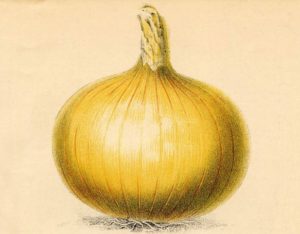
The Many Layers to Onion Farming in Westport
Westport’s fertile soil and ease of access by boat and rail once made it home to a thriving onion farming industry.
Read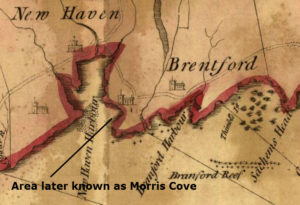
East Haven’s Revolutionary Salt Works
East Haven’s Amos Morris helped supply Americans with salt (essential for preserving food) during critical shortages brought on by the American Revolution.
Read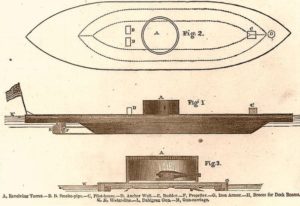
Cornelius Bushnell and His Ironclad Ship
Cornelius Scranton Bushnell was a 19th-century Connecticut businessman and shipbuilder whose successfully lobbied on behalf of a local railroad enterprise.
Read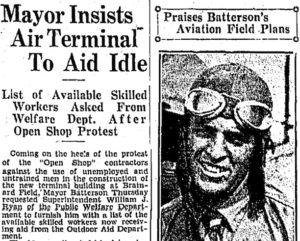
“Something to Show for Our Work”: Building Brainard Airport
At the height of the Great Depression, unemployed men living around Hartford, became a cheap source of labor to help build Brainard airport.
Read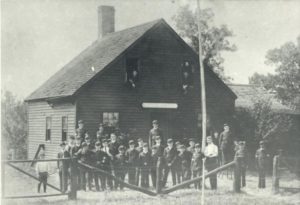
Mary Hall: Connecticut’s First Female Attorney
Writer and suffragist Mary Hall studied law under John Hooker and became Connecticut’s first female attorney.
Read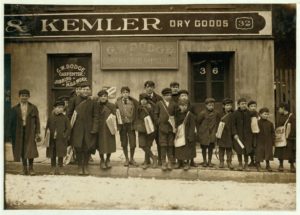
The Newsies Strike Back
Despite organizing in 1909 to fight pay cuts, ultimately, vending machines and changing business models brought an end to the era of the Hartford newsie.
Read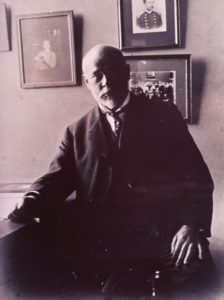
The Innumerable Accolades Afforded Dr. William H. Welch
Trained at Yale, William Welch was a native of Norfolk, Connecticut, and one of the most celebrated physicians of his time.
Read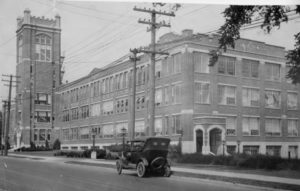
Hartford’s Fuller Brush Company Goes Door-to-Door Across US
Founded in 1906 by Alfred C. Fuller, the Fuller Brush Company was one of Connecticut’s most notable corporations.
Read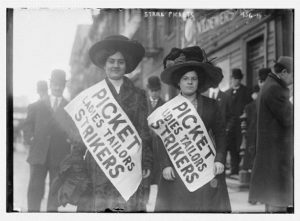
Triangle Shirtwaist Fire: Connecticut Lessons from a Tragedy
While the Triangle Shirtwaist fire in New York City is one of the most famous tragedies behind the organized labor movement, Connecticut had its share of equally dangerous work environments in the early 20th century.
Read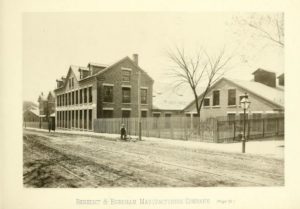
Early 19th-Century Immigration in Connecticut
Numerous factors contributed to the growth of Connecticut in the decades following American independence.
Read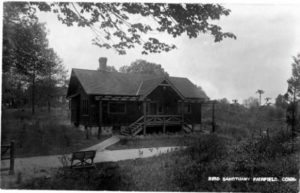
A Woman Ahead of Her Time: Mabel Osgood Wright
This writer and photographer founded the Connecticut Audubon Society and created Fairfield’s Birdcraft Sanctuary.
Read
North and South: The Legacy of Eli Whitney
After studying to become a lawyer, Eli Whitney actually helped further American industrial production methods through his numerous clever inventions.
Read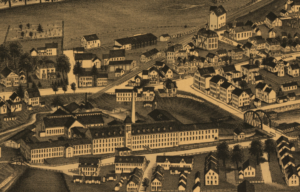
The Industrial Revolution Comes to Jewett City
The site of earlier mills, Jewett City seemed well-suited to the Tibbets’ textile enterprise: the Jewett City Cotton Manufacturing Company.
Read
“Negroes Who Stand Up and Fight Back” – Paul Robeson in Hartford
Called the “greatest mobilization of police in the city’s history,” the event that brought law enforcement out in force to Keney Park was not a riot, not a strike, but a concert by this singer-actor and activist.
Read
Clarence Dickinson Carries Printing Innovation into the 20th Century
Clarence Dickinson was a long-time Haddam resident and pioneer in offset lithography—a process using printing plates on chemically treated flat surfaces.
Read
Windsor Tobacco: Made in the Shade
By the mid-19th century, the “Tobacco Valley,” Springfield, Massachusetts to Hartford, Connecticut had become a center for cash-crop production.
Read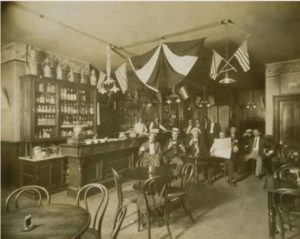
Union Brew
Brewery strike in 1902 leads some to drink ginger ale, rather than beer, as a sign of solidarity.
Read
Hidden Nearby: Two Monuments to Sportsmen at Housatonic Meadows State Park
Two monuments in Housatonic Meadows State Park mark this area’s reputation as one of the finest fly fishing locales in the Northeast.
Read
The Hartford Courant: The Oldest US Newspaper in Continuous Publication
On October 29, 1764, New Haven printer Thomas Green began publishing The Hartford Courant (then known as The Connecticut Courant) in Hartford, Connecticut.
Read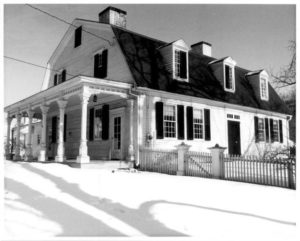
The Darlings Make Preservation a Family Affair
Thomas Darling was an 18th-century merchant, farmer, and politician and a member of the colonial elite.
Read
100 Years of Workers’ Compensation
Early attempts to enact industrial accident protections for workers were ruled unconstitutional by US courts, but a New York tragedy paved the way to successful legislation in Connecticut and elsewhere.
Read
Free Speech for Some – Who Knew?
In 1939, 150 years after the original passage, Connecticut finally ratified the US Bill of Rights, guaranteeing workers the right to free speech.
Read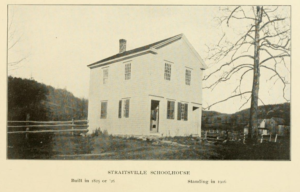
Child Labor vs. Schooling in 19th-century Naugatuck
The Naugatuck school system today consists of 11 public schools that provide a thorough contemporary education to over 4,000 students—but this was not always the case.
Read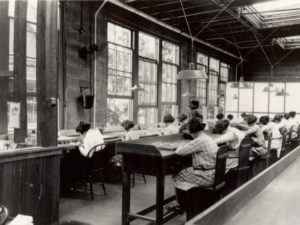
Waterbury’s Radium Girls
In the early 20th century, girls working at the Waterbury Clock Company faced death and disease from exposure to radium in the workplace.
Read
A Shipping and Railroad Magnate Remembers His Connecticut Roots
From Connecticut, Charles Morgan was a shipping and railroad magnate who became one of the most esteemed New York millionaires of the 19th century.
Read
Plainfield Academy: Preparing Connecticut Scholars in the 18th and 19th Centuries
Founded in the late 18th century, the Plainfield Academy went on to become just the third school incorporated in the state of Connecticut.
Read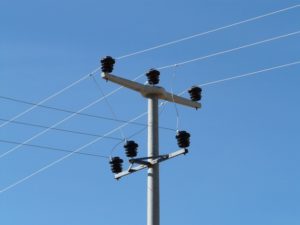
One Powerful Family in Bozrah
The operation of BL&P began strictly as a family affair with a focus on providing exemplary service to the local community.
Read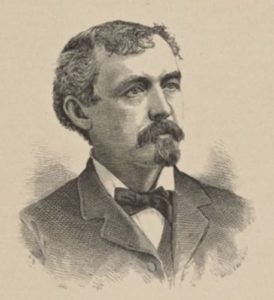
William Edgar Simonds: A Schoolteacher Turned Civil War Hero
Originally a teacher, William Edgar Simonds’ service during the Civil War launched Simonds into a life of politics and international acclaim.
Read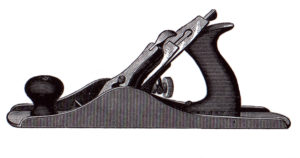
Stanley Works for New Britain
In 1843, Frederick Stanley founded a small shop in New Britain to manufacture bolts, hinges, and other hardware products for sale to local residents.
Read
Connecticut Daredevil Andrew Mamedoff Joins Royal Air Force
Andrew Mamedoff was a daredevil, pilot, and war hero who became one of the first Americans to join England’s Royal Air Force.
Read
When Milk Powered Watertown’s Industry
The story of the dairy industry in Watertown mirrors that of many industries in Connecticut.
Read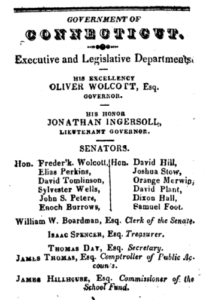
Elias Perkins: One of Lisbon’s Most Accomplished Public Servants
Elias Perkins’s career in public service lasted nearly half a century and made him a popular figure both locally and nationally.
Read
When Bozrah Provided Comfort to the Nation
For the better part of a century, the Bozrah mills utilized by the Palmer Brothers company served the Fitchville section of town and the surrounding community.
Read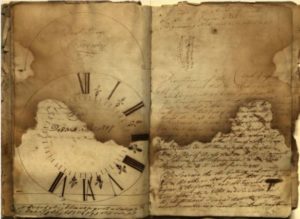
When the World Ran on Connecticut Time
The success of the clock- and watch-making industries in Connecticut came about in an era when the state was just beginning to realize its industrial potential.
Read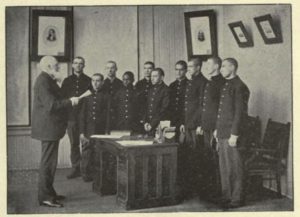
Zebulon Brockway: A Controversial Figure in Prison Reform
Zebulon Brockway was one of the more successful and controversial figures in prison reform during the 1800s.
Read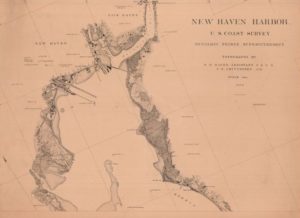
Three Young Engineers: Charting New Haven
When the United States Coast Survey set out to compile detailed charts of New Haven Harbor in the 1870s, they hired recent graduates of Yale’s Sheffield Scientific School as assistants.
Read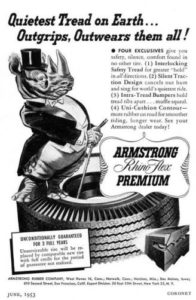
Armstrong Finds a Niche in the Tire Market
Armstrong tires, one of the most popular brands of automobile and farm equipment tires in the 20th century, has its roots in West Haven, Connecticut.
Read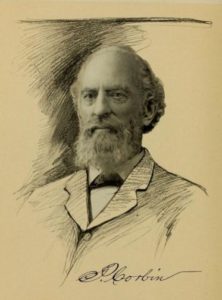
Philip Corbin: Manufacturing A Legacy for New Britain
The P&F Corbin Company manufactured builders’ hardware, including hooks, sash fasteners, picture nails, locks, and knobs, and coffin trimmings.
Read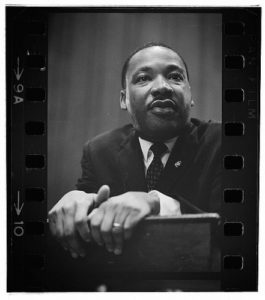
Dr. Martin Luther King Jr’s Time in Connecticut
In the summer of 1944, a young Martin Luther King Jr. worked at the Simsbury tobacco farm of Cullman Brothers, Inc.
Read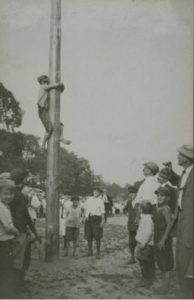
Labor Day at the Turn of the 20th Century
In February of 1889, the Connecticut General Assembly passed a bill making the first Monday of each September a legal holiday.
ReadMore Articles




